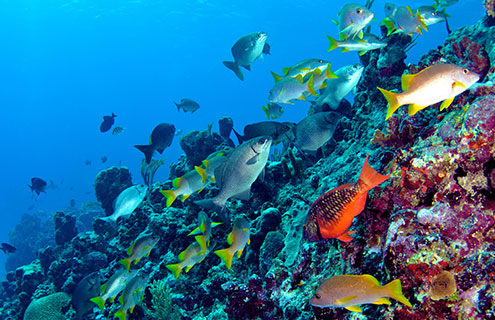The majority of risk assumed by Bermuda-based captive insurance companies originates in North America, but business lines covered in the jurisdiction remain diverse, according to the Bermuda Monetary Authority (BMA) Captive and Special-Purpose Insurers (SPI) Report 2017.
According to the report, 62 percent of risk originates in North America, while 25 percent comes from Europe. Of European risk, almost half was from Ireland, and 25 percent was from the UK.
The report noted that Bermuda does not focus or specialise on any particular industry or type of business underwritten. This means it has a diverse range of industries that are utilising captives for risk management.
The largest industry is financial institutions, which are parent companies for 18 percent or captives.
This is followed by the shipping, transport and storage industry with 14 percent, and the automotive, manufacturing and retail industry with 11 percent.
Captives that focus on financial institutions take a significant piece, 54 percent, of the premium share of the Bermuda captive market.
Those focusing on shipping, transport and storage take 11 percent, and wholesale and retail captives take 6 percent.
Of business written by Bermuda captives, 55 percent falls under property coverage lines, while 45 percent is casualty coverage.
Of all property coverage, 38 percent is property and casualty catastrophe coverage; 21 percent is for warranty and residual value; and 16 percent was marine coverage, including protection and indemnity, cargo, hull and liability and war coverage.
Casualty coverage is more evenly split, with workers’ compensation and employers’ liability accounting for 29 percent; motor coverage accounting for 24 percent; and general liability, including public, products, umbrella and product recall coverage, accounting for 21 percent.
In terms of market composition, the report said 61 percent of captives have a ‘pure captive’ structure. The next most common structure was ‘other’, however, selected by 21 percent.
Rent-a-captives account for 7 percent, while group captives, association captives and agency captives account for 6, 4 and 1 percent, respectively, and risk retention groups make up less than 1 percent of the market.
Around 17 percent of insurers have segregated accounts, and 15 percent are in run-off.
The report also noted the success of SPIs, following the introduction of the regime in 2009, suggesting it has been “the catalyst” for creation of the insurance-linked securities market in the island.
Bermuda SPIs wrote coverage in 17 regions in 2016, with 69 percent of business coming from North America and 25 percent coming from Europe.
SPI reinsurance covers consisted primarily of catastrophe bonds and collateralised reinsurance, accounting for 44 percent and 36 percent, respectively.
Over 90 percent of premiums were written for property lines of business. Of all property lines, lines, 77 percent was property and casualty catastrophe. Terrorism coverage accounted for 15 percent.
Craig Swan, managing director for supervision (insurance) at BMA, said: “Considering the island’s leadership position in the global captive and SPI space, and its overall importance, there is naturally a level of interest generated from industry participants and peers.”


